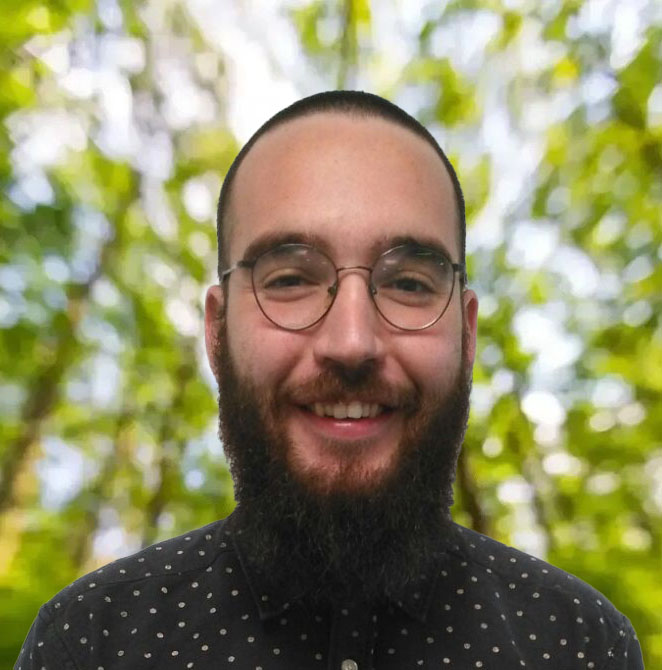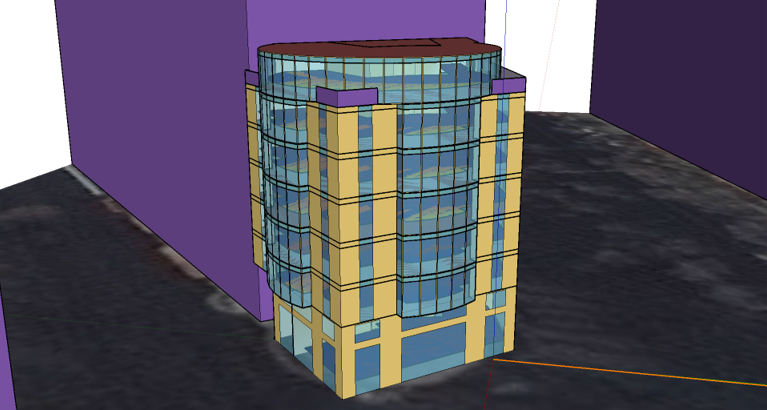Natural lighting is key to improving occupant comfort in our buildings. The benefits of high-quality natural lighting are such that the LEED certification has given it credit. In this article we will explain what a lighting study consists of and how to justify it based on a lighting simulation.
What does the LEED credit say about natural lighting?
The EQc7 credit proposes three options for assessing the quality of natural lighting. The first option can provide up to 3 points and requires an annual simulation to calculate the spatial Daylight Autonomy (sDA) and the Annual Sunlight Exposure (ASE). The sDA describes how much surface area receives sufficient illumination, while the ASE indicates how much surface area receives too much direct sunlight. This option requires an annual simulation, which is very computationally expensive, especially because the manipulation of the blinds by the occupants must be taken into account.
The second option is similar to the first one, but instead of calculating the sDA and ASE it looks for the illumination on our working plane to be between 300 and 3000 lux. Moreover, it does not require an annual simulation, but a couple of instantaneous simulations are sufficient. This option is simpler because you only have to study the distribution of natural light during the equinoxes at nine in the morning and three in the afternoon, which saves simulation time.
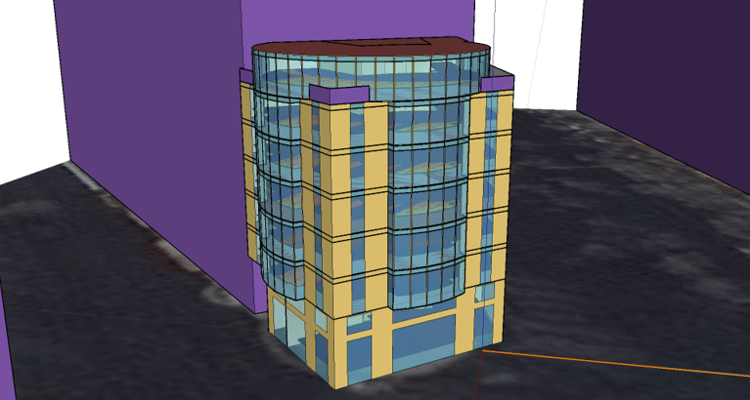
Option 2 of the EQc7 credit of LEED allows obtaining up to 2 points if at least 75% of the surface receives between 300 and 3000 lux
The third option also checks that the lighting levels are between 300 and 3000 lux, but instead of simulating natural lighting, it takes measurements directly in the building when the work has been completed. With this option, you can obtain up to 3 points, but there is no room for manoeuvre in terms of design.
Among the three options, we have chosen the second one because with a simpler simulation, it is possible to propose changes during the design phase and justify the EQc7 Daylight credit of the LEED certification.
How to perform the simulation with Radiance
Once the second option to justify the credit is chosen, it is only necessary to perform a couple of simulations for each work plan during the equinox. The LEED manual describes the steps to follow to perform these simulations.
First we have to take into account the climatic conditions at our site, so from our climate file (.epw) we extract the direct solar radiation and the diffuse radiation from the sky. In order to get closer to reality, we propose to calibrate the data and make the monthly averages coincide with those collected in the Atlas de Radiación Solar en España (Atlas of Solar Radiation in Spain).
Based on the climate data, the day to be studied must be selected. The LEED manual makes us choose, from the fortnight around the equinox, the day with the clearest sky. For this purpose, we have used the definition of sky clarity proposed by Richard Perez
Where corresponds to the horizontal diffuse irradiation,
the direct normal irradiation, and
the solar elevation angle in radians. Once the day with the clearest sky near the equinoxes is chosen, based on solar radiation data, the average between March 21 and September 21 is taken. With the climate data during the equinox, simulations can now be run at Radiance at nine o'clock in the morning and three o'clock in the afternoon to justify the LEED credit.
To export the model from Sketchup, as we said in the previous article, we use the Groundhog plugin. Not only does it export the geometry but, thanks to the fact that it is an open source software, we can automate the steps described in the LEED manual: place a workspace about 75 cm from the floor, leave a margin of about 60 cm with the walls, set the reflectance of the finishes and the transmittance of the glass, etc.
How to justify the credit with Radiance
Once the Radiance simulation is done, it is necessary to see how much of the surface is above 3000 lux and how much is below 300 lux. If we take the office building as an example and carry out a natural lighting simulation, we observe that the building is sensitive to direct solar radiation at nine o'clock in the morning, due to its orientation and the curtain wall.
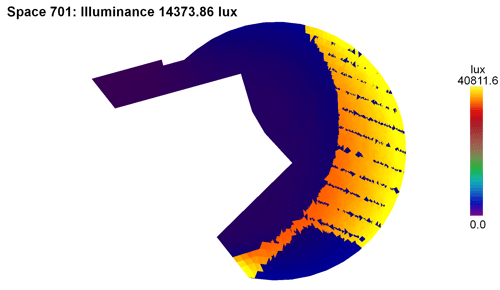
On the top floor, with more glass surface, more than 40% of the surface is above 3000 lux.
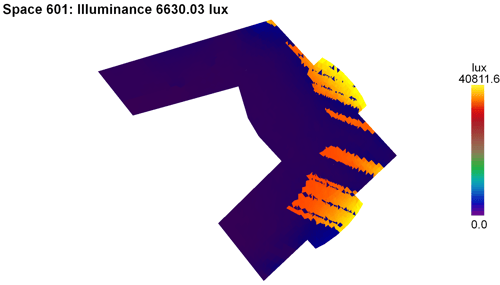
Even so, thanks to the fact that in the rest of the floors, the surface with glare problems is below 17%, it is possible to reach the minimum 75% to justify option 2 of the EQc7credit and obtain a point in the LEED certification.
